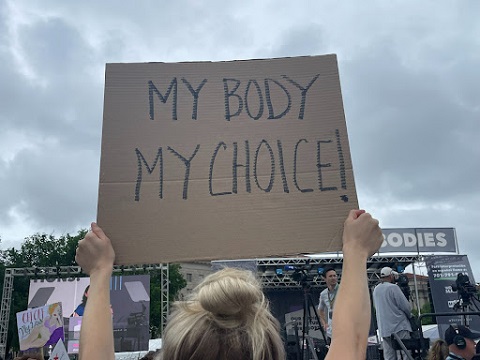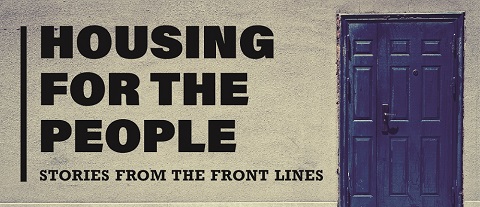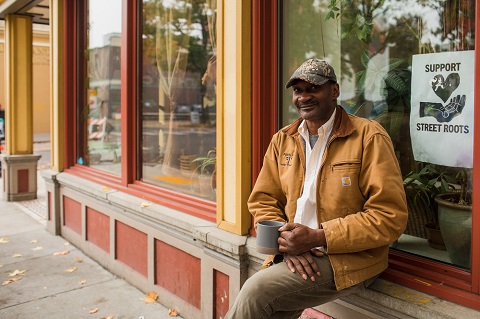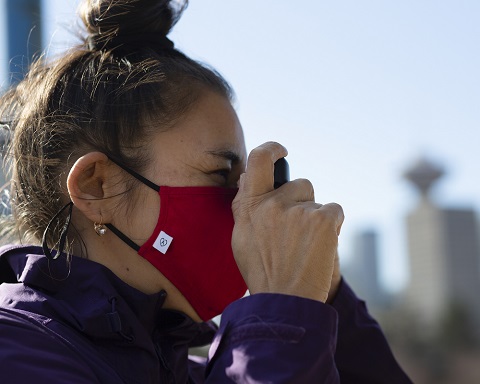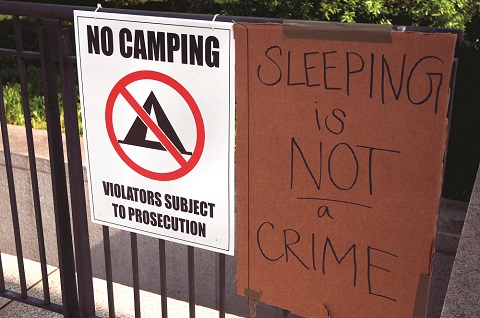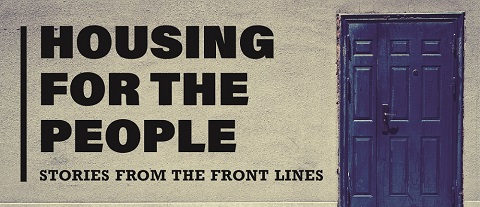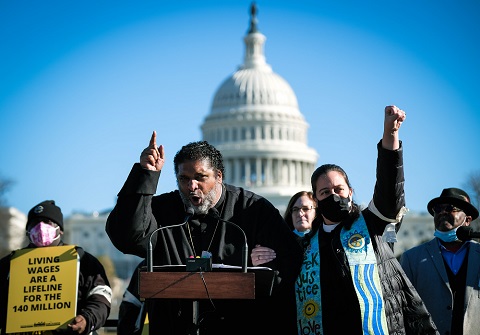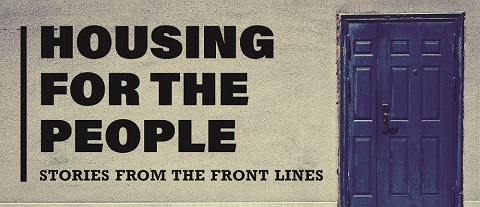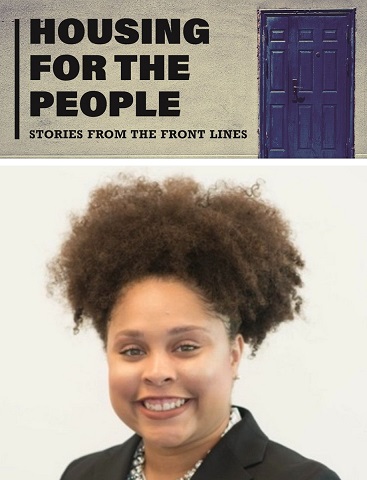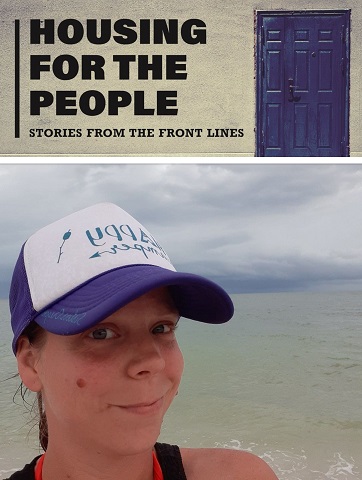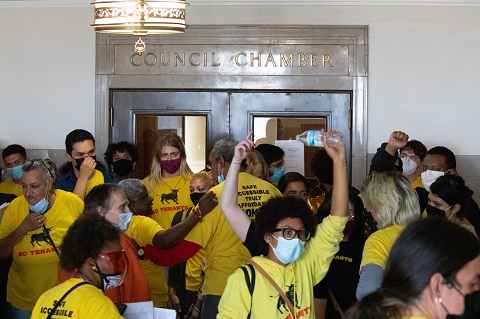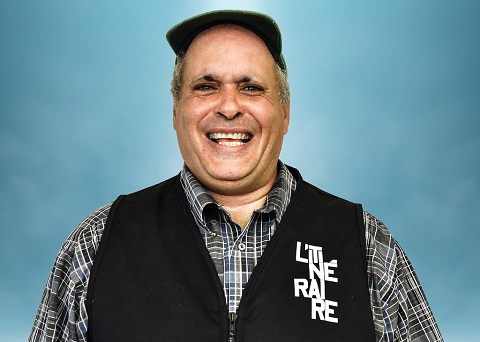By Jessica Pollard, Street Roots
Loud noises from flashbangs, the roaring of helicopters, and other tactics police are using to control the crowds of demonstrators in Portland are taking an emotional toll on the city’s houseless bystanders.
Regina Blakeman, a Street Roots vendor, recently secured housing at the Bud Clark Commons. But this past week, she’s been anxious to make the trek back to her apartment.
Blakeman was nearby when demonstrators and police gathered outside Target on Southwest 10th Avenue over the weekend and sought shelter close to a nearby business when she said she heard flashbangs and a helicopter overhead.
“I hid in a corner,” she said. “I just took myself.”
Her acquaintance Poa, who camps along Southwest Columbia Street, said he was hit in the leg with a flashbang during the demonstrations but did not provide details as to where the incident occurred.
They both said they were having trouble finding places to charge their phones, with downtown storefronts boarded up amid a wave of civil unrest in response to the 25 May police killing of George Floyd, a 46-year-old Black man, in Minneapolis. Thousands of protesters have gathered in downtown Portland for the past eight nights.
J. Blakeman said shattered glass in doorways was making it difficult for people to find places to sleep downtown.
“In a big way, it’s affecting everybody,” she said.
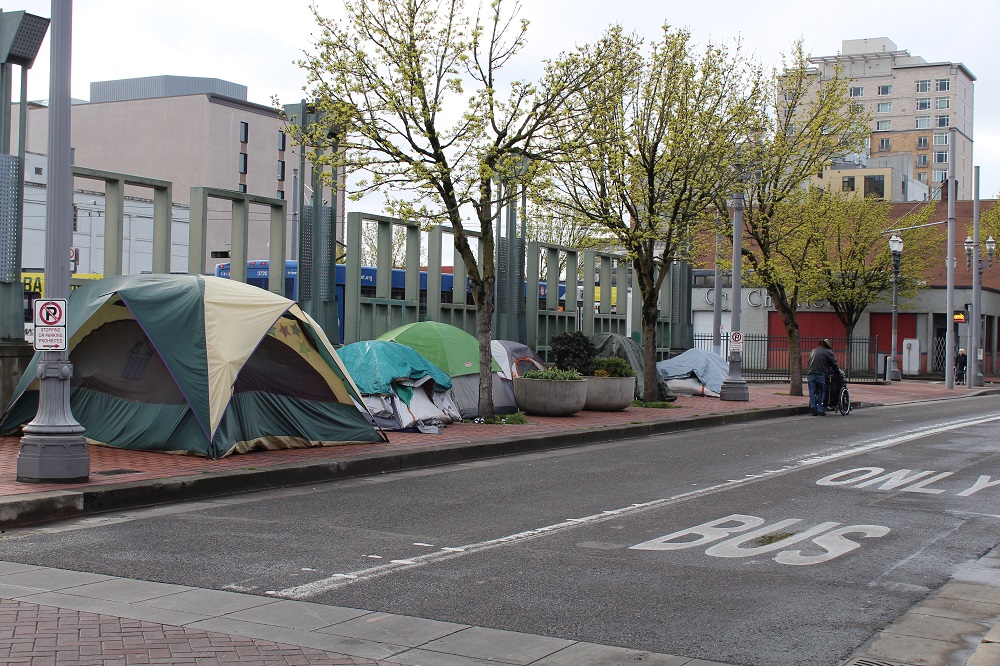
One houseless man was punched and then threatened with a hammer on Saturday night after becoming frustrated with rowdy passers-by after demonstrations that night.
Another man, who goes by Hippi, said he came back into Portland Saturday night after a few days away to find the downtown area in a state of unrest.
He camped on the east side of the city to the sound of flashbangs across town and expressed that while he’s accustomed to loud noises, he hardly slept that night for fear the business he was in front of would get caught in the action.
“It was quite an ordeal, Saturday night, for me,” he said.
And for people with post-traumatic stress disorder, the police’s crowd control tactics may be especially traumatic.
“Loud, unexpected, and disorienting experiences can trigger these reactions and increase one’s experience of PTSD symptoms,” said Dr. Trisha Vinatieri, supervisor for the PTSD Clinical Team at the Veteran Affairs Portland Health Care System.
Close to 40 per cent of unsheltered people in Multnomah County (who were not in transitional housing or emergency shelters) reported dealing with PTSD, according to the 2019 Point-In-Time Count, and more than 11 per cent were veterans.
The PTSD Clinical Team works with individuals who have experienced situations involving non-lethal crowd control. Vinatieri noted an overall uptick in referrals recently, although the cause for this is undetermined.
“I will say that the providers on our team have shared that many of the veterans with whom they work are finding the current events, namely George Floyd’s murder, to be very triggering and upsetting,” she said.
At a Portland City Council meeting Wednesday morning, Commissioners Chloe Eudaly and Jo Ann Hardesty both expressed concerns about the Portland Police Bureau’s use of the compound 2-chlorobenzalmalononitrile, also known as tear gas, on protesters during the middle of a pandemic.
“I will say that the providers on our team have shared that many of the veterans with whom they work are finding the current events to be very triggering and upsetting”
“We know that it causes respiratory distress,” Hardesty said. “And we know that as we see more and more people showing up to protests, those people are putting their health at risk, and that risk is going to be exacerbated by tear gas and other chemical elements. We have an obligation to find out what the impact of those chemical weapons are on protestors, especially at the height of a pandemic.”
And while the police have reportedly aimed tear gas and other crowd control devices at demonstrators in the past week, people living outside — in communities with higher rates of chronic respiratory illnesses — are affected, as well.
One woman, who goes by Michelle, said she was camping on Southwest 10th Avenue near Safeway when a group of protesters gathered in the lot across from her tent and she caught a whiff of tear gas.
“I was in shock,” she said. “I don’t ever want to see that happen again.”
Michelle added that if it weren’t for a friend camping nearby, she wouldn’t have known to zip up her tent and hunker down that day. Now, she said, she’s considering moving her belongings elsewhere. When asked if she had any respiratory issues, she said “a little bit.”
An open letter that was published earlier this week and signed more than 1,200 public health officials provides health guidance for demonstrations and opposes the use of tear gas and other irritants that may increase the spread of the coronavirus “by making the respiratory tract more susceptible to infection, exacerbating existing inflammation, and inducing coughing.”
The Centers for Disease Control and Prevention recommends those who have been exposed to riot control agents like CS gas should wash their clothes and entire bodies with soap and water as soon as possible. But Street Roots reported in March that laundry and shower services for people sleeping outside in Portland are particularly limited as organizations work to keep up with social distancing measures.
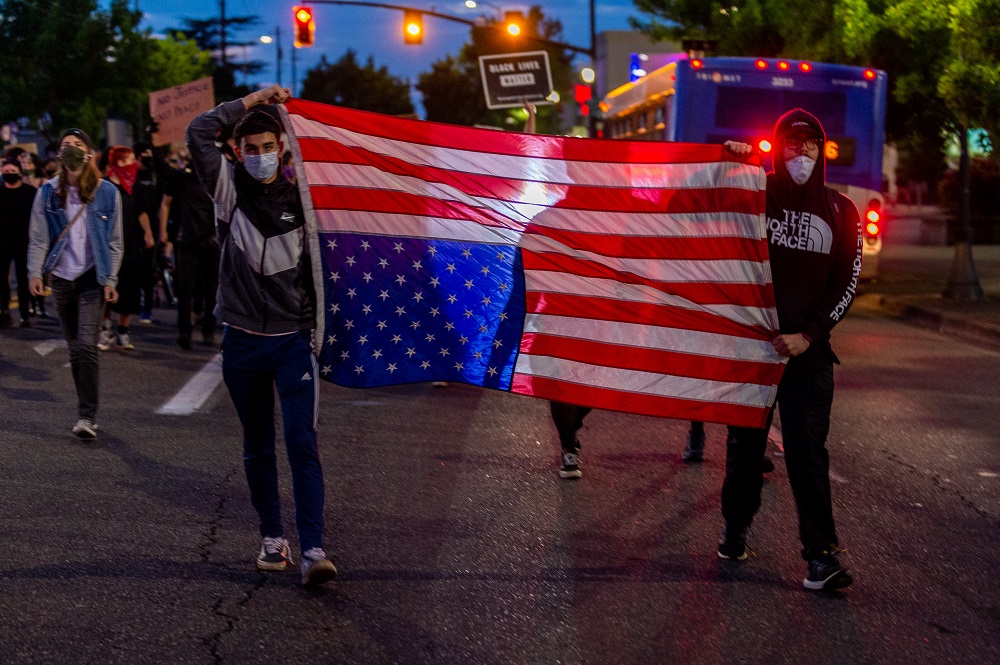
Portland Police Bureau Deputy Chief Chris Davis has defended the use of tear gas, saying in a press conference Thursday that it was the safest way to get protesters to move from an area they are occupying.
In a Friday press conference, Mayor Ted Wheeler said he was open to banning tear gas on three conditions: there are viable alternatives, those alternatives don’t involve higher uses of force, and the alternatives allow officers to “be safe” and use those tactics “safely.”
The Oregonian reported Wednesday that outreach teams throughout the city have canvassed the streets after demonstrations to offer supplies and assistance to people sleeping outside in affected areas.
Denis Theriault, spokesperson for the Joint Office of Homeless Services, said that since demonstrations intensified 29 May, the Joint Office has been connecting with outreach teams such as Cascadia Behavioral Health’s Street Outreach more frequently each day to get a better idea of how crowd-control devices could be affecting people and if demand for services is increasing.
“As of Wednesday morning, we hadn’t heard of any big uptick. But it’s all anecdotal. We’re still looking to find out if that changes,” Theriault said. “As this goes on, I think there are going to be some more discussions about if we need to do something else for folks. But I don’t know what those are going to look like just yet.”
He added that some people sleeping outside said they haven’t been affected by recent events downtown but that varying levels of police response each night make it hard to tell who is going to be affected and how.






